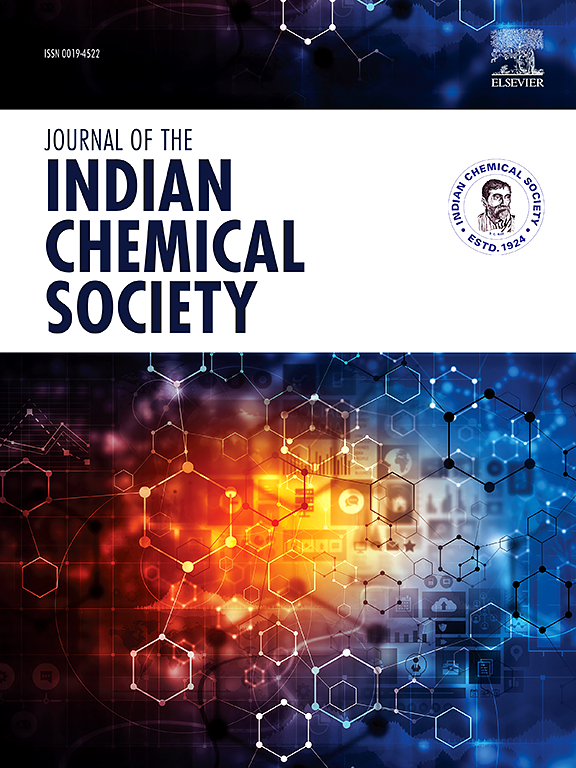可见光敏感活性炭-金属氧化物(TiO2、WO3、NiO和ZnO)纳米催化剂降解亚甲基蓝和罗丹明B
IF 3.2
4区 化学
Q2 CHEMISTRY, MULTIDISCIPLINARY
引用次数: 0
摘要
采用水热合成法制备了四种金属氧化物(TiO2、WO3、NiO和ZnO)重量为20%的金属氧化物-活性炭复合材料。采用BET、XRD、SEM、TEM、UV、PL、FTIR等方法对纳米催化剂进行表征。小颗粒尺寸、长时间的可见光吸收光谱区域、更窄的带隙和更高的表面积都是在创造高活性可见光光催化剂的努力中获得的。通过在MO纳米颗粒中加入AC,可以将带隙从2.63 eV调节到2.21 eV,有效地提高了MO的可见光活性。与ZnO-AC、WO3-AC和NiO-AC相比,合成的TiO2-AC纳米颗粒在60 min内对污染物的降解率约为100%。由于碳的窄带隙和多孔性,AC加速了对MB的降解速度。此外,通过一级动力学模型、稳定性和不同清除剂的研究,系统地研究了AC在不同MOs中的作用。本研究开发的光催化剂在大规模废水处理中具有广阔的应用前景。本文章由计算机程序翻译,如有差异,请以英文原文为准。

Visible light sensitive activated carbon-metal oxide (TiO2, WO3, NiO, and ZnO) nano-catalysts for the degradation of methylene blue and Rhodamine B
Hydrothermal synthesis was used to produce four metal oxide–activated carbon composites with metal oxide weights of 20 % (TiO2, WO3, NiO, and ZnO). BET, XRD, SEM, TEM, UV, PL, and FTIR were all used to learn more about the nano-catalysts. Small particle size, prolonged visible absorption in the spectral region, a narrower bandgap, and a higher surface area were all attained in an effort to create highly active visible light photocatalysts. By incorporating AC into MO nanoparticles, the bandgap can be tuned from 2.63 eV to 2.21 eV, effectively increasing the MOs' visible light activity. In comparison to ZnO-AC, WO3-AC, and NiO-AC, synthesized TiO2-AC nanoparticles degrade the pollutant by approximately 100 % within 60 min. Because of the narrow bandgap and porosity of carbon, AC accelerates the rate of degradation of MB. Additionally, a first order kinetic model, stability, and different scavengers' studies were systematically conducted to investigate the role of AC in different MOs. The photocatalyst developed in this research shows promise for large-scale wastewater treatment.
求助全文
通过发布文献求助,成功后即可免费获取论文全文。
去求助
来源期刊
CiteScore
3.50
自引率
7.70%
发文量
492
审稿时长
3-8 weeks
期刊介绍:
The Journal of the Indian Chemical Society publishes original, fundamental, theorical, experimental research work of highest quality in all areas of chemistry, biochemistry, medicinal chemistry, electrochemistry, agrochemistry, chemical engineering and technology, food chemistry, environmental chemistry, etc.

 求助内容:
求助内容: 应助结果提醒方式:
应助结果提醒方式:


